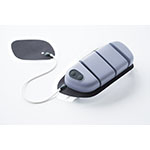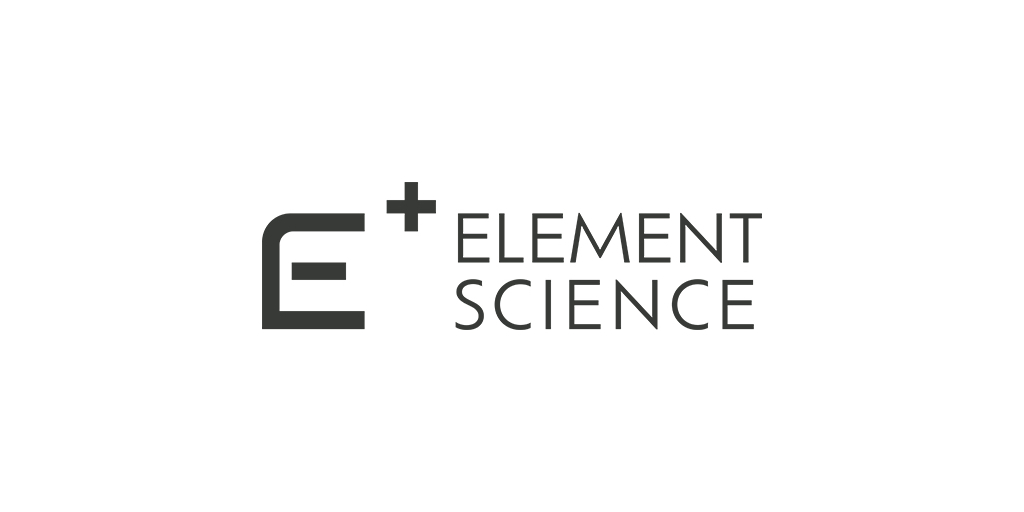Publication of Strongly Positive Findings Demonstrate Benefits of Innovative Jewel® Patch Wearable Cardioverter Defibrillator for Patients at Risk of Sudden Cardiac Arrest

“There were no patient deaths or missed episodes requiring external rescue, and high patient compliance enabled a high number of successful life-saving conversions.”
SAN FRANCISCO–(BUSINESS WIRE)–Element Science, an innovative health technology company pioneering a digital wearable platform for high-risk cardiovascular patients, today announced the publication of its Jewel IDE Study results, conducted in sites across the United States, in the prestigious Journal of the American College of Cardiology (JACC)1 as well the recent publication of its Jewel EP Lab Study, conducted in the European Union, in Europace2. The publication of these positive results underscores the potential impact of the Jewel® Wearable Patch Cardioverter Defibrillator (Jewel) and highlights the value of utilizing truly patient-centric technology when managing patients at risk of sudden cardiac arrest (SCA).
Dr. Zubin Eapen, Element Science’s Chief Medical Officer, said, “Patients with significant heart disease, especially those who are recovering from certain events like a heart attack, face a high frequency of out-of-hospital SCA, often accompanied by a low survival rate. By enabling truly continuous SCA protection that patients can easily manage while they recover at home, Jewel can greatly enhance these patients’ survival prospects and is an important addition to the tools physicians have to protect their patients.”
Wearable cardioverter defibrillators (WCDs) are effective at restoring patient’s heart rhythms to a normal rhythm, but they have faced challenges related to patient comfort, and therefore compliance, limiting their widespread adoption and leading to potentially avoidable deaths from SCA. Jewel addresses these compliance issues with its low-profile, water-resistant design, allowing patients to wear the device comfortably during daily activities, including showering and moderate exercise. Jewel is designed to integrate into patients’ lives, allowing them to comfortably carry out daily activities.
The Jewel IDE Study1, which enrolled 305 patients and successfully exceeded all pre-specified endpoints, provides crucial data on Jewel’s safety, compliance, and efficacy.
- High Compliance and Protected Time: Patients using Jewel achieved a median wear-time of over 23 hours per day, showcasing its ease of use and integration into patients’ daily lives.
- Lives Saved and No Deaths: The device successfully converted eight separate ventricular tachycardia or ventricular fibrillation events in six (6) different patients, effectively preventing SCA. No deaths were observed in patients while enrolled in the study.
- Low Inappropriate Shock Rates: The study observed a very low inappropriate shock rate of just 0.36 shocks per 100 patient-months, providing patients with peace of mind.
Dr. Javed Butler, a National Principal Investigator for the Jewel IDE Study and primary author, noted, “The results are a clear indication that wearable defibrillators can be designed with the patient in mind. Jewel’s comfortable and water-resistant design allows patients to maintain their daily activities while still receiving life-saving protection.”
Dr. Uday N. Kumar, Founder, President, and CEO of Element Science, commented, “The study results presented in JACC represent a significant achievement for the Company and provide clear evidence of how the high compliance seen with the Jewel led to patients wearing the device when they needed it, thereby saving numerous patients from SCA. Jewel’s unique design, accompanied by a sophisticated machine learning algorithm, addresses many of the challenges faced by traditional wearable defibrillators. We look forward to seeing the positive impact Jewel will have in real-world practice.”
In addition to the Jewel IDE Study, the Jewel EP Lab Study2 was conducted to provide foundational safety and effectiveness of the Jewel in terminating life-threatening arrhythmias. This first-in-human study, which also successfully met all pre-specified endpoints, was crucial as it confirmed that Jewel could successfully identify and convert life-threatening rhythms in a single shock.
Dr. Karol Watson, a member of Element Science’s Scientific Advisory Board, stated, “Improved adherence with wearable defibrillators can significantly impact patient outcomes. Results from the EP Lab Study followed by the Jewel IDE Study showcase the potential of the Jewel P-WCD to provide continuous protection for patients at risk of SCA, without the usual challenges related to comfort and adherence. It’s a large step forward in providing effective solutions for those with significant heart disease.”
About the Jewel® Patch Wearable Cardioverter Defibrillator (P-WCD)
Jewel is a low-profile, water-resistant wearable cardioverter defibrillator designed to continuously monitor a patient’s heart rhythm in order to detect and treat life-threatening arrhythmias in patients with a temporarily elevated risk for SCA. It is designed for 24/7 protection, including during normal daily activities like showering, sleeping, and moderate exercise. The Jewel Mobile App enables timely patient care by transmitting therapy information to the patient’s medical team in near real-time.
Jewel is an investigational device and is limited by U.S. law to investigational use only. It is not available for sale in the U.S. Jewel received CE Mark and UK Conformity Assessed (UKCA) marking in January 2024, but is currently not commercially available in the European Union or Great Britain.
About the Jewel IDE Study
The Jewel IDE Study (NCT05201495) was a multicenter, prospective, single-arm study that enrolled 305 patients and followed them for up to 180 days in a primarily outpatient setting. The study objective was to evaluate the safety and effectiveness of the Jewel P-WCD in patients at high risk for sudden cardiac arrest. Endpoints included: patient compliance / wear-time, number of patient saves / conversions, inappropriate shock rate, and cutaneous adverse device effects. The Jewel IDE Study successfully met its pre-defined endpoints.1
About the EP Lab Study
The EP Lab Study (NCT05490459) was a single-arm, open-label evaluation of the Jewel P-WCD defibrillation waveform in up to 18 adult cardiac patients while undergoing care in an EP (electrophysiology) lab setting. The objective was to demonstrate the clinical effectiveness of Jewel in terminating life-threatening ventricular arrhythmias (VT/VF) with a single defibrillation shock. The EP Lab Study successfully met its pre-defined endpoint.2
About Element Science, Inc.
Element Science, Inc. is a medical device and digital health company focused on developing solutions at the intersection of clinical-grade wearables, machine learning algorithms, and lifesaving therapies in order to address leading causes of death and hospitalization in patients with heart disease, primarily as they transition from the hospital-to-home. By putting the needs of patients and physicians first, our personalized digital devices, which are designed for function, comfort, and ease-of-use, aim to redefine the paradigm of care for these patients. Our first product, a wearable patch defibrillator, is initially targeted at treating more than 500,000 patients in the U.S. with an elevated temporary risk of potentially experiencing a lethal heart rhythm. Based in San Francisco, our funders include Third Rock Ventures, Google Ventures, Deerfield Management, Qiming Venture Partners USA, Cormorant Asset Management, and Invus Opportunities. For more information, please visit www.elementscience.com.
LEARN MORE ABOUT THE JEWEL IDE STUDY: www.ElementScience.com/ide-study/
LEARN MORE ABOUT ELEMENT SCIENCE: www.ElementScience.com
-
Jewel IDE Study Manuscript: JACC 84(6), p525-536: DOI 10.1016/j.jacc.2024.04.063
Editorial: Patch Wearable Defibrillator: Excellent Therapy, But Patient Acceptance Is a Sticky Issue, JACC 84(6) p537-539: DOI 10.1016/j.jacc.2024.06.014
- EP Lab Study Manuscript: EP Europace 26(7), e189: DOI 10.1093/europace/euae189
Contacts
Sharon N. Buechler
Element Science
650-218-6340
press@elementsci.com




